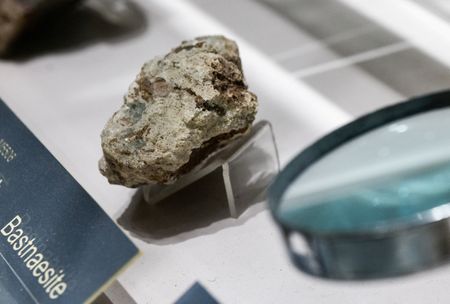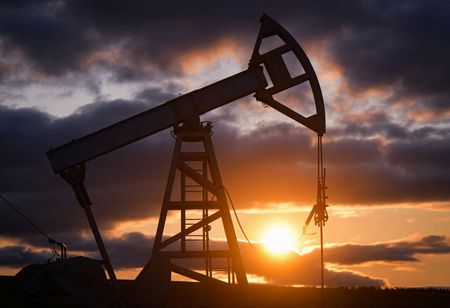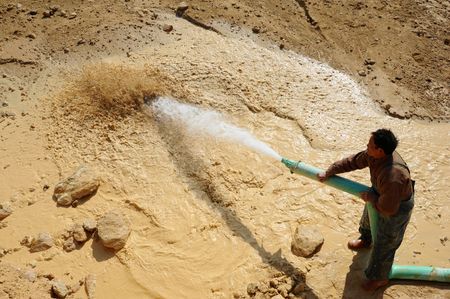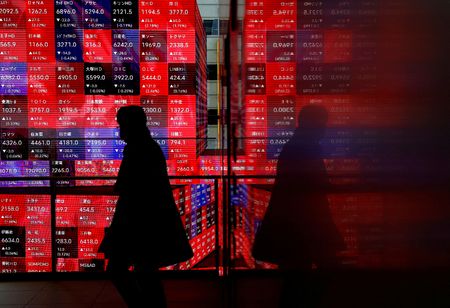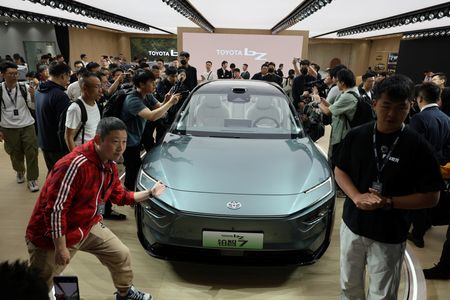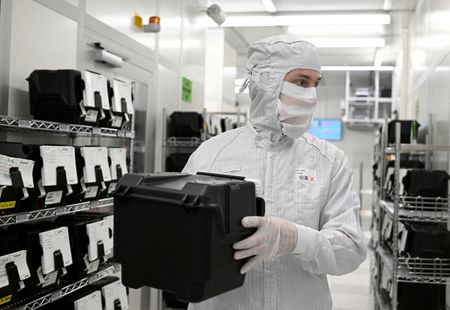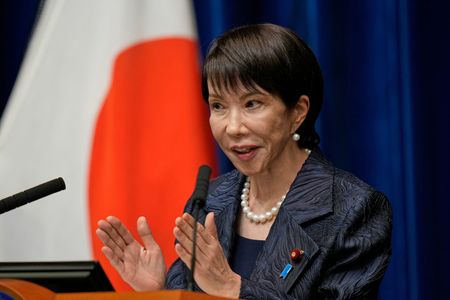By Anmol Choubey
(Reuters) -Goldman Sachs flagged mounting risks to global supply chains of rare earths and other critical minerals, emphasising China’s dominance in mining and refining, and outlining challenges for nations seeking to build independent supply chains.
China expanded export curbs on rare earths on October 9, adding five new elements and extra scrutiny for semiconductor users ahead of an expected summit of leaders Donald Trump and Xi Jinping.
CHINA’S SUPPLY CHAIN LEVERAGE
In a note on Monday, Goldman Sachs said China controls 69% of global rare earth mining, 92% of refining, and 98% of magnet manufacturing.
Rare earth elements (REEs) have become a flashpoint in geopolitics, as they are critical to high-tech industries and essential in uses from batteries to computer chips, artificial intelligence, and defence equipment.
While the rare earth market was valued at $6 billion last year, just a fraction the size of the copper market, which is 33 times bigger, the bank warned that a disruption of 10% in industries reliant on REEs could result in $150 billion in lost economic output, besides inflationary pressures fed by the shortages.
MINERALS COULD FACE EXPORT CURBS
Goldman Sachs flagged samarium, graphite, lutetium, and terbium as particularly vulnerable to export curbs.
Samarium, used in heat-resistant samarium-cobalt magnets, is key for aerospace and defense. Disruptions in supply of widely-used lutetium and terbium also pose risks of GDP losses.
The bank highlighted light rare earths, such as cerium and lanthanum, as future targets for curbs, since China has a dominant role in refining and mining.
Western producers like Lynas Rare Earths and Solvay could ease shortages, it added, but reliance on China remains substantial.
CHALLENGES TO INDEPENDENT SUPPLY CHAINS
Countries are scrambling to build independent REE and magnet supply chains, but Goldman Sachs saw barriers from geological scarcity to technological complexity and environmental challenges.
It said heavy rare earth elements were particularly scarce outside China and Myanmar, with most known deposits being small, lower-grade, or radioactive, while developing new mines requires eight to 10 years.
Refining REEs requires advanced expertise and infrastructure, with builds typically taking five years, the bank said.
Additionally, magnet production outside China, though expanding in the U.S., Japan, and Germany, faces constraints because of China’s control of critical inputs such as samarium.
INVESTMENT AND COMMODITY RISKS
Goldman Sachs suggested equities as a way for investors to manage rare earth disruption risks, citing Iluka Resources, Lynas Rare Earths, and MP Materials Corp as key players.
The bank forecast a deficit in supplies of Neodymium-Praseodymium Oxide (NdPrO), critical for making magnets,
Beyond rare earths, Goldman Sachs warned that commodities such as cobalt, oil, and natural gas faced rising risks of supply disruptions due to geopolitical tension.
(Reporting by Anmol Choubey in Bengaluru; Editing by Clarence Fernandez)

